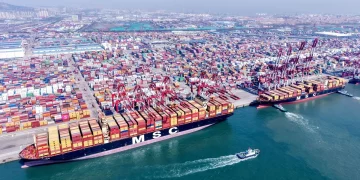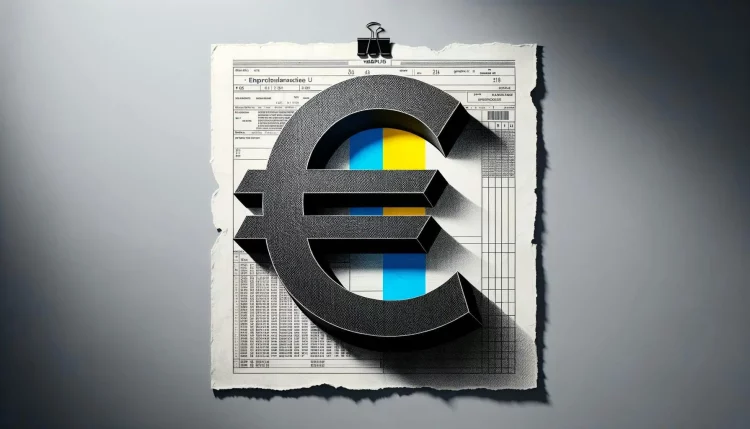As Europe emerges from the shadows of the COVID-19 pandemic, the region’s economy faces a new and increasingly concerning challenge: the risk of deflation. After years of grappling with sluggish growth and high levels of public and private debt, the eurozone is now at a crossroads. While inflation has been a primary concern for global economies, the threat of deflation – a sustained decline in the general price level – has started to emerge as a key risk to the region’s economic stability. Economic stagnation, slow recovery, and structural challenges within the eurozone could be setting the stage for a prolonged period of deflation, which could have significant consequences for the region’s economy, employment, and financial stability. The question remains: Is the eurozone on the brink of deflation, and how can policymakers prevent it?
Introduction: The Risk of Deflation in the Eurozone Amidst Economic Stagnation
Deflation is often viewed as the inverse of inflation. While inflation leads to rising prices and erodes purchasing power, deflation has the opposite effect: falling prices. In some ways, falling prices may seem like a positive development for consumers, but when they occur across an entire economy over a prolonged period, they can trigger a range of negative effects. These include reduced consumer spending, delayed investments, rising real debt burdens, and higher unemployment. These factors could create a vicious cycle that is difficult to break, particularly in the context of an already fragile economic environment.
For the eurozone, deflation represents a distinct risk as it faces a sluggish recovery from the pandemic-induced recession, alongside rising global inflationary pressures and the ongoing effects of the war in Ukraine. Amidst this uncertainty, many key economic indicators point to stagnation, which raises alarms about the potential for deflation to take hold. Unlike other advanced economies, where inflation has been a dominant concern in the post-pandemic world, the eurozone has experienced an uneven recovery, with some countries facing significant challenges in restoring growth to pre-crisis levels.
Moreover, the eurozone is grappling with demographic headwinds, including an aging population, low birth rates, and an increasing dependency ratio, which can further exacerbate the risks of economic stagnation and deflation. These long-term structural challenges are compounded by the immediate effects of rising energy prices, supply chain disruptions, and geopolitical tensions, all of which have strained the eurozone’s economic performance.
In this environment, the specter of deflation has become a real concern. As the region continues to battle with these ongoing challenges, it is critical to assess the key economic indicators, the role of the European Central Bank (ECB), and the potential consequences of deflation for the eurozone’s future.
Key Economic Indicators: Inflation Rates, Unemployment, and GDP Growth Data
The first step in understanding the risk of deflation in the eurozone is to examine the key economic indicators that could signal a deflationary trend. While inflation has been the dominant concern in the global economy, the eurozone has seen significantly weaker price increases in recent years, particularly when compared to other major economies such as the United States. This could be indicative of an underlying deflationary pressure in the region.
Inflation and Price Stability
Inflation rates in the eurozone have been relatively subdued, especially when compared to other advanced economies. According to recent data from Eurostat, the annual inflation rate in the eurozone fell to 0.3% in the final quarter of 2024, well below the European Central Bank’s target of just below 2%. While this might appear as a temporary relief after the global surge in energy prices during the pandemic recovery phase, it also raises concerns about weak demand and stagnating consumer spending, which could be harbingers of a deflationary environment.
The subdued inflation rates also indicate that price pressures in the eurozone remain weak, despite global supply chain disruptions and rising costs in some sectors. This is especially concerning because inflation can act as a cushion against deflation by stimulating demand and encouraging businesses to invest. Without inflationary pressures, the eurozone risks entering a deflationary spiral where businesses cut prices to stimulate demand, but this only further erodes economic activity.
Unemployment and Employment Trends
Unemployment rates in the eurozone have improved since the height of the pandemic, but the labor market remains fragile in many parts of the region. While some countries, particularly in Northern Europe, have seen lower unemployment rates, southern European nations like Spain and Italy continue to struggle with high unemployment, particularly among youth. High levels of unemployment can exacerbate deflationary pressures, as unemployed individuals are less likely to spend, leading to reduced overall demand in the economy.
The labor market is also characterized by increasing job insecurity and a rise in part-time or temporary employment contracts, which further weakens consumer confidence. As employment struggles to return to pre-pandemic levels, particularly in some of the region’s largest economies, the eurozone faces the risk of stagnant wages and reduced purchasing power, both of which are key factors in driving deflation.

GDP Growth and Economic Output
The eurozone’s GDP growth has been disappointing in recent years. After a sharp contraction in 2020 due to the pandemic, the region has struggled to return to strong growth levels. According to the latest data from the European Commission, GDP growth in the eurozone was forecasted to be 1.4% in 2025, far below the pre-pandemic growth rate of around 2% annually. This sluggish growth, combined with weak inflation, indicates that the economy is not generating enough demand to overcome the downward pressures that could lead to deflation.
The slow pace of recovery can be attributed to several factors, including persistent supply chain disruptions, slow vaccination rollouts in some countries, and geopolitical instability, which have all hindered economic activity. Additionally, the aging population in many eurozone countries poses a structural challenge to economic growth, as it reduces the labor force and increases the burden on public services, making it more difficult for the region to achieve sustainable economic expansion.
European Central Bank’s Role: How the ECB Is Responding to Potential Deflation
The European Central Bank (ECB) plays a crucial role in shaping the economic landscape of the eurozone, and its policies will be pivotal in determining whether the region slips into deflation or is able to regain its footing. The ECB has a primary mandate to maintain price stability, which is traditionally understood as an inflation rate of close to, but below, 2%. In response to the pandemic, the ECB adopted an aggressive stance, lowering interest rates to historic lows and implementing a massive bond-buying program to inject liquidity into the economy. These policies were aimed at stimulating demand and preventing deflation.
However, with inflation rates remaining low and growth expectations muted, the ECB faces a difficult balancing act. On one hand, it must avoid tightening monetary policy too quickly, as this could dampen the fragile recovery. On the other hand, if the ECB keeps interest rates too low for too long, it risks fueling asset bubbles and creating other distortions in the economy.
As of early 2025, the ECB has signaled that it will keep interest rates low and maintain accommodative policies for the foreseeable future. However, it has also warned that its ability to stimulate demand through monetary policy is limited, particularly in an environment where inflation is weak and growth remains subdued. The ECB has indicated that it may need to consider additional measures, such as targeted fiscal stimulus or structural reforms, to combat the risk of deflation.
Potential Consequences: What Deflation Could Mean for the Eurozone’s Economy
If deflation were to take hold in the eurozone, it could have serious consequences for the region’s economic stability and growth prospects. A deflationary environment could lead to reduced consumer spending, as people postpone purchases in anticipation of falling prices. This reduced demand would, in turn, force businesses to lower prices further, exacerbating the economic downturn. In the worst-case scenario, deflation could spiral into a prolonged recession.
Additionally, deflation would increase the real burden of debt for both businesses and consumers. This could lead to higher default rates, particularly in heavily indebted economies such as Italy and Greece. Higher debt burdens would further constrain economic growth, as resources that could be used for investment or consumption are instead redirected toward servicing debt.
Moreover, deflation could weaken the eurozone’s banking sector, as falling prices would lead to lower profits for banks and an increase in non-performing loans. This could result in tighter credit conditions, further reducing investment and economic activity.
Finally, deflation could lead to political instability, as economic stagnation and rising unemployment could fuel discontent among citizens. The eurozone’s political landscape is already marked by growing populism and skepticism toward the European Union, and a deflationary spiral could exacerbate these trends.
Conclusion: What Can Be Done to Avoid Deflation?
The risk of deflation in the eurozone is real and requires careful monitoring and action from policymakers. The European Central Bank’s monetary policies, while important, are unlikely to be sufficient on their own to prevent deflation. Structural reforms, fiscal stimulus, and targeted investment in green and digital technologies will be crucial to generating sustained economic growth. If the eurozone is to avoid the pitfalls of deflation, it will need to implement a coordinated policy response that addresses both short-term economic challenges and long-term structural weaknesses.


































